
Greece. Expectation vs reality
So, Greece, the cradle of European culture. Somehow, from school, a significant number of myths have accumulated in my head about what this country is like. And since I do not really like being in error, I decided to take, go and face the truth … Moreover, the tickets were inexpensive. 🙂
Heading north:
Heraklion

To be honest, I thought that all Greeks are the same, and therefore the cities on the island of Crete should not be very different from the cities on the neighboring island of Cyprus. You know, it happens to people that instead of drawing conclusions from what they see, they are simply looking for confirmation of their theories. So, at first it seemed to me that I was right and all that.

But pretty soon had to admit that I was wrong. Crete looks much more lively and modern.

A communist festival with the recitation of the works of Lenin and Vladimir Mayakofsky? Damn, for this life did not prepare me.

I think the word “superstore” excellent demonstrates the dynamics of the development of modern Greek.

Fight club simulator, hike.

Apparently, there are very cultured vandals here: instead of puncturing tires or breaking windows on an abandoned car, they just write ACAB (“All cops are bastards”).

The center of Heraklion turned out to be a huge citadel, surrounded by five-meter fortress walls that run along its perimeter and are interrupted only by the sea itself.

No, seriously, it looks really powerful.

And this is not an attraction with crowds of tourists, as is usually the case, but the norm of life here.

There are many scooters in the city. And more motorcycles.
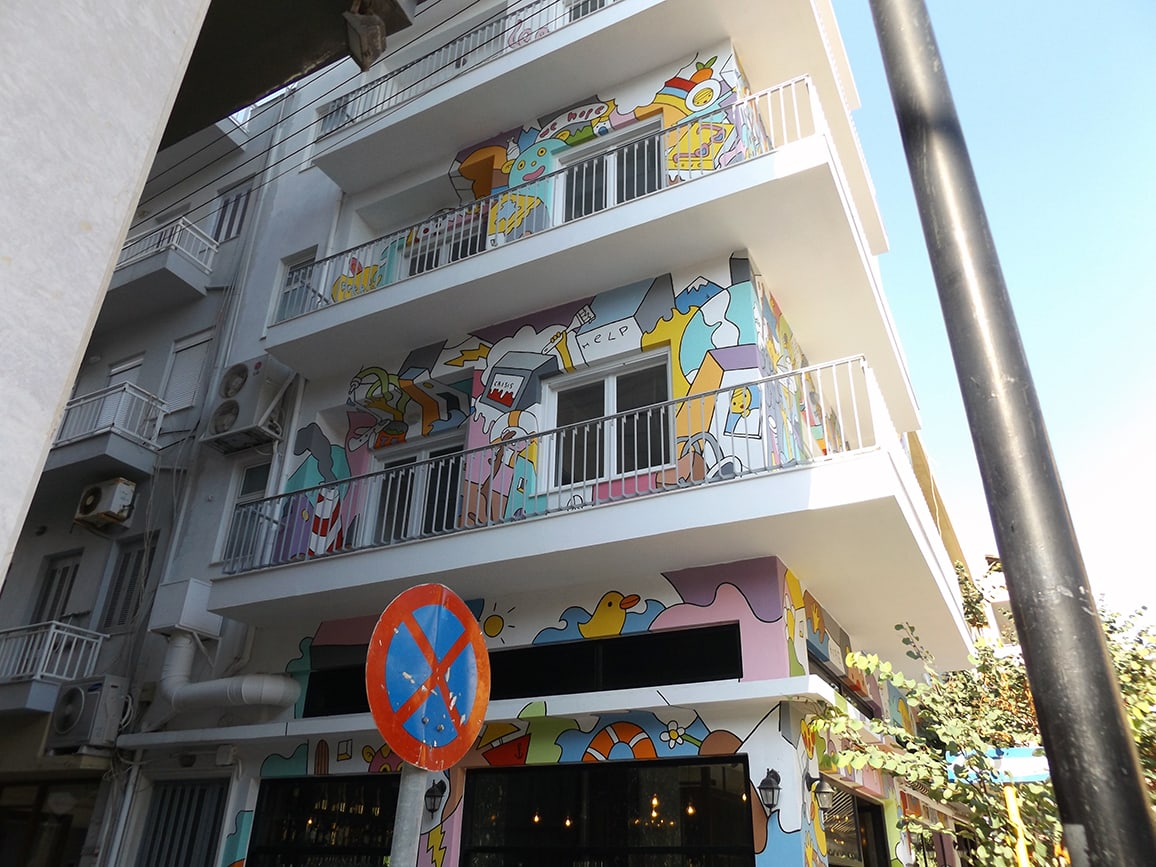
I don’t know what’s going on here, but I definitely like the inscriptions on these pictures: “We hope”, “Help”, “Crisis”. Class!

Accidentally stumbled upon the city market. It seems to be an ordinary market, but there are suspiciously many sea sponges selling here.

There are a lot of sea sponges. Strange, in short.

It’s sad to see when beautiful facades are covered with clumsy advertising banners.

But in general, this is not so bad here.

Orthodox Church. Here they also looked like this before, it was later, under the influence of Catholicism, that luxury elements such as golden domes and decoration appeared. Greek braces against this background look more tough.

Minotaur Street.)
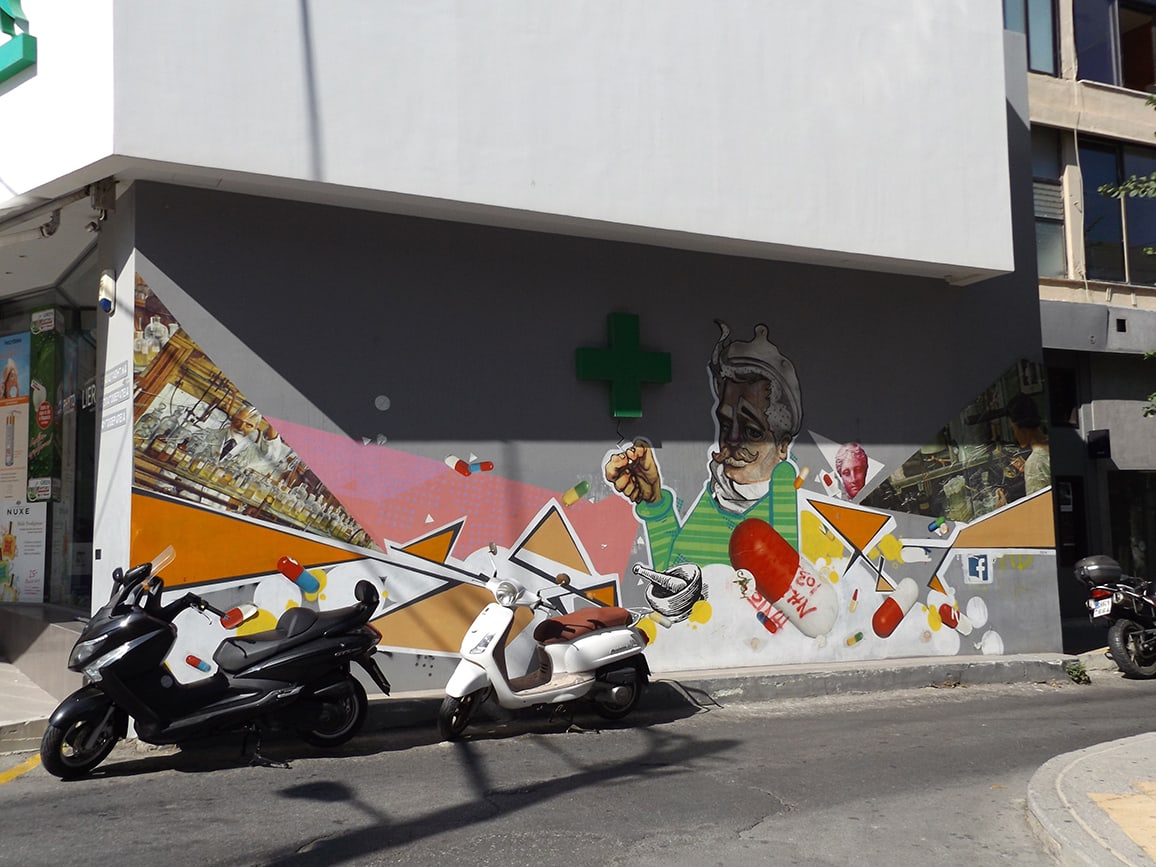
It seems that writing “Pharmacy” seemed too trivial to the owners, so they could not miss the chance to appear in Neyalieto.

And this is how the locals usually see the city.
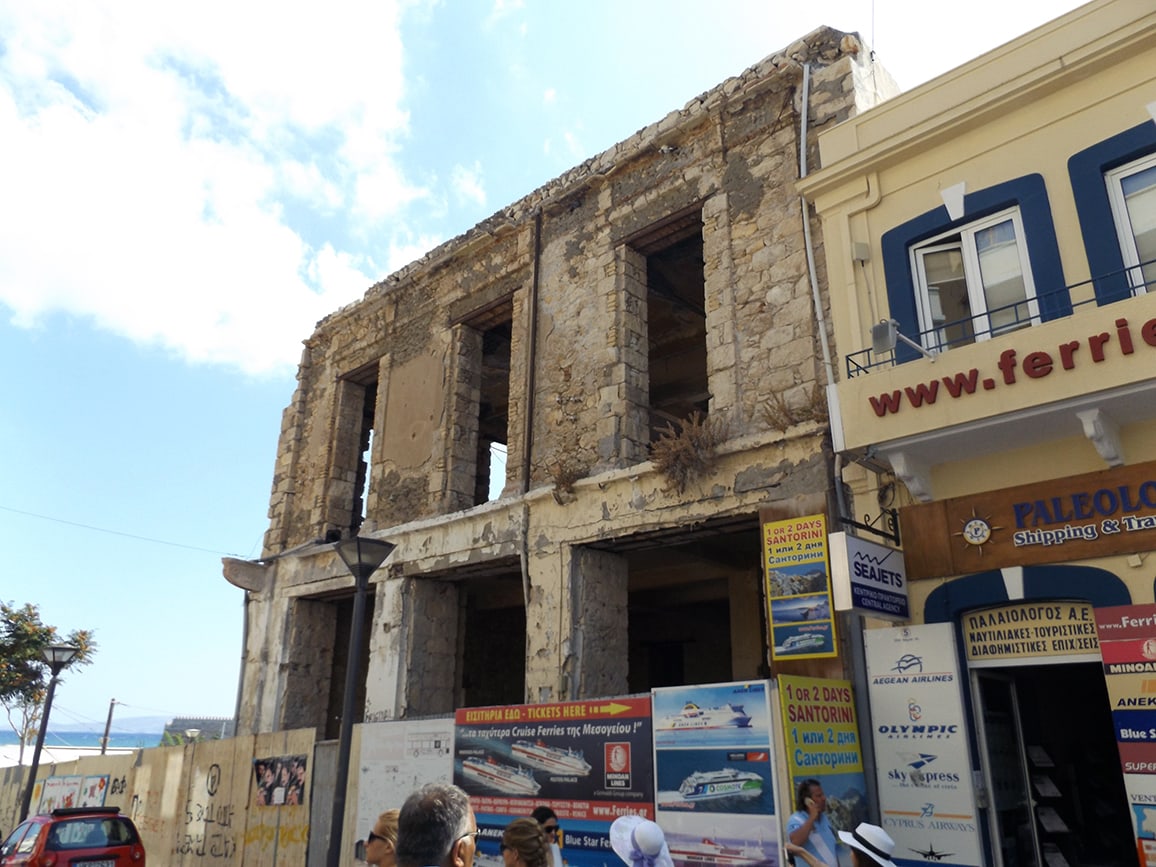
I’m going to the sea. It is strange somehow to see abandoned buildings in the most seemingly busy part of the city.

That feeling when the alphabet of your language is based on Greek, and you realize that “Idiotico” does not translate at all as “Parking lot Atlantis”. For a long time I tried to figure out what was the matter, and it turned out that idiots in Greece were originally called individualists who did not participate in elections and other democratic processes, which then directly influenced their own lives. Symbolically, of course, we used this word for a deep degree of mental retardation, but the modern meaning of the Greek word “idiot” is “private person.” That is, “idiotic parking” is like just “private parking”, and not what we all thought now.
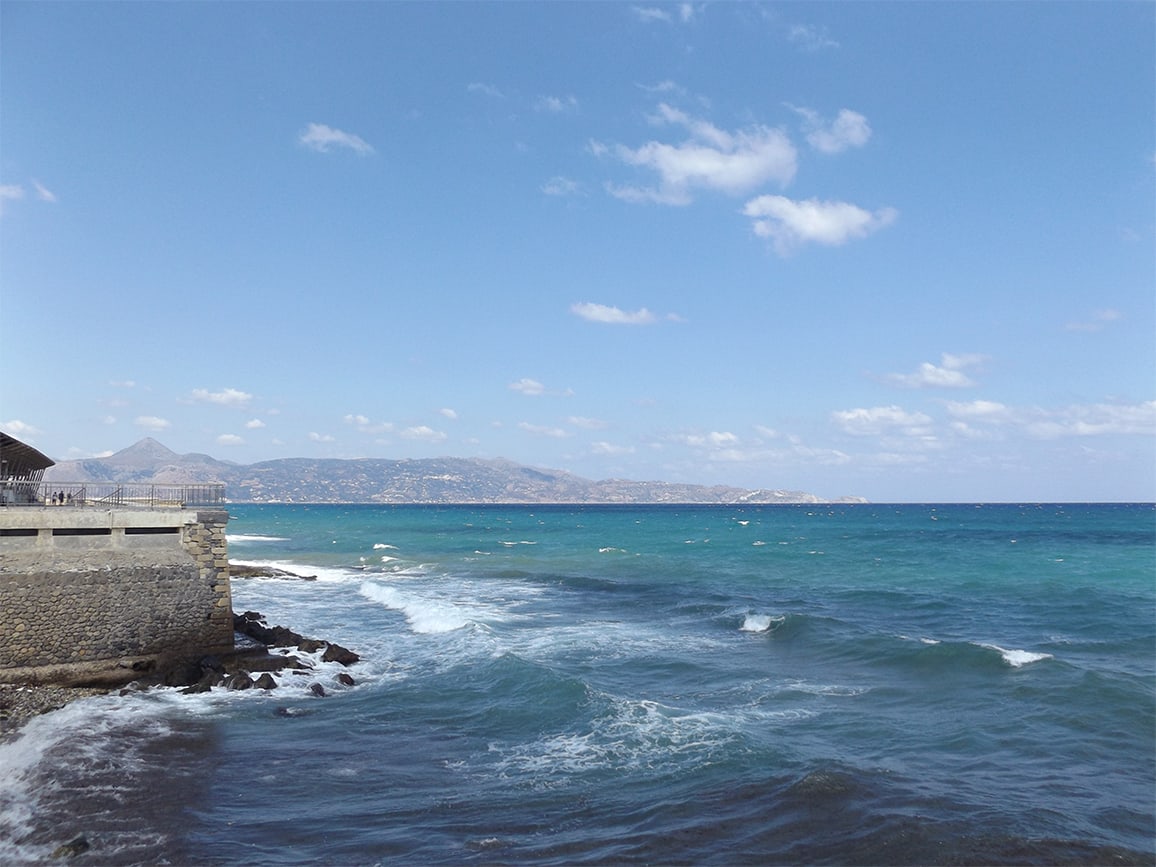
A strong wind blew from the sea, sometimes raising waves that surfers would appreciate.

The old Venetian port is used mainly for private boats and motor boats. A large trade and transport route is located outside the old city.

(See instructions on how to properly dispose of trash.)

I went to look at the Museum of the History of Crete. This is how the outline of the Heraklion fortress looks like, which I palely tried to describe at the beginning. It’s a shame that there is an airport right next to the city, and therefore the drone cannot fly high enough to film it live.

It is noteworthy that the guys use an inverted map: we are used to highlighting land as a kind of entity (and perceive the sea as emptiness), while the islanders marked the sea as white. From some side, it is logical, it is comfortable to navigate the sea, and the land, on the contrary, is a difficult obstacle, where you need to take into account the relief, local natives and so on, but personally it was difficult for me to perceive just such a map everywhere.

It is hard to see in the photo, but water flows there in cascades. In a thing that is a couple of thousand years old, and which, in theory, needs to be protected from moisture. But on the other hand, to show ancient technologies in action – isn’t it worth it?

Pirates of the Mediterranean. To be honest, they really were here.

Last look at Eden.
Knossos
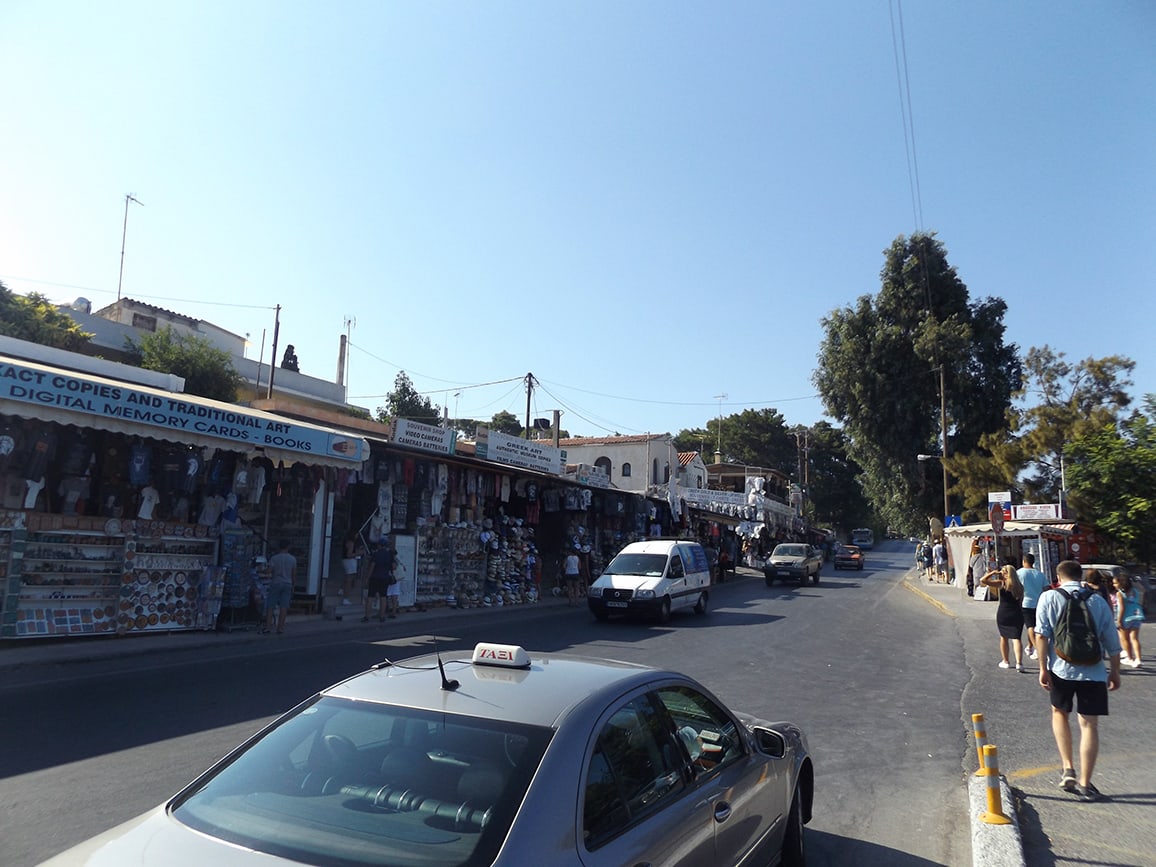
The center of the village is one large souvenir market.

But if you go a little further, then completely cozy streets begin, inhabited by incredibly hospitable people.

I’m trying to find a higher point. It turns out to be easy, because Knossos is located on the hills.

Finally I found a high enough place from where you can control the drone as far away as you want. This picture shows about 4/5 of the entire village. Quite small.

But Knossos was not always like this. About 4000 years ago, it was the main city of the Minoan civilization, which ultimately gave rise to all ancient Greek culture as we know it, which founded all the main sciences such as mathematics and physics, and a bunch of other things. And specifically here was the Palace of Knossos, which, among other things, was a concentration of engineering thought abruptly of modern CERN. Well, for example, here plumbing, ventilation, sewerage, heating, artificial lighting, and the cherry on the cake were designed and implemented – it was all multi-storey. Google in what huts and dugouts people lived 4000 years ago, to realize what kind of spaceship “Andromeda” were the Minoan cities for contemporaries.

But, perhaps, you already know about one of the parts of the Palace of Knossos. Here, on the lower floors, the same labyrinth of the Minotaur was located, which until the very 20th century was considered just another ancient Greek myth. But, as it turned out, the labyrinth really existed, although did live there a man-eating mutant (or something like that) we will most likely never know.

But that’s not all. Somewhere in a kilometer from the labyrinth, archaeologists managed to find the ruins of another palace, which, as it turned out later, belonged to the daughter of King Minos. I think you know her name too. Her name was Ariadne.
Piraeus

If you ask any Greek what Piraeus is, he will answer you without hesitation – the main port of Greece.

The photo shows about a fifth of the entire port, but even this is enough to feel the scale. Nine-storey ships with a displacement of tens tons here seem to be just small boats huddled in a corner of the terminal.

Sometimes there are large private yachts, but mostly regular liners and cargo barges come here.

Naturally, the obvious industrial purpose of the port cannot but leave its mark on the urban environment.
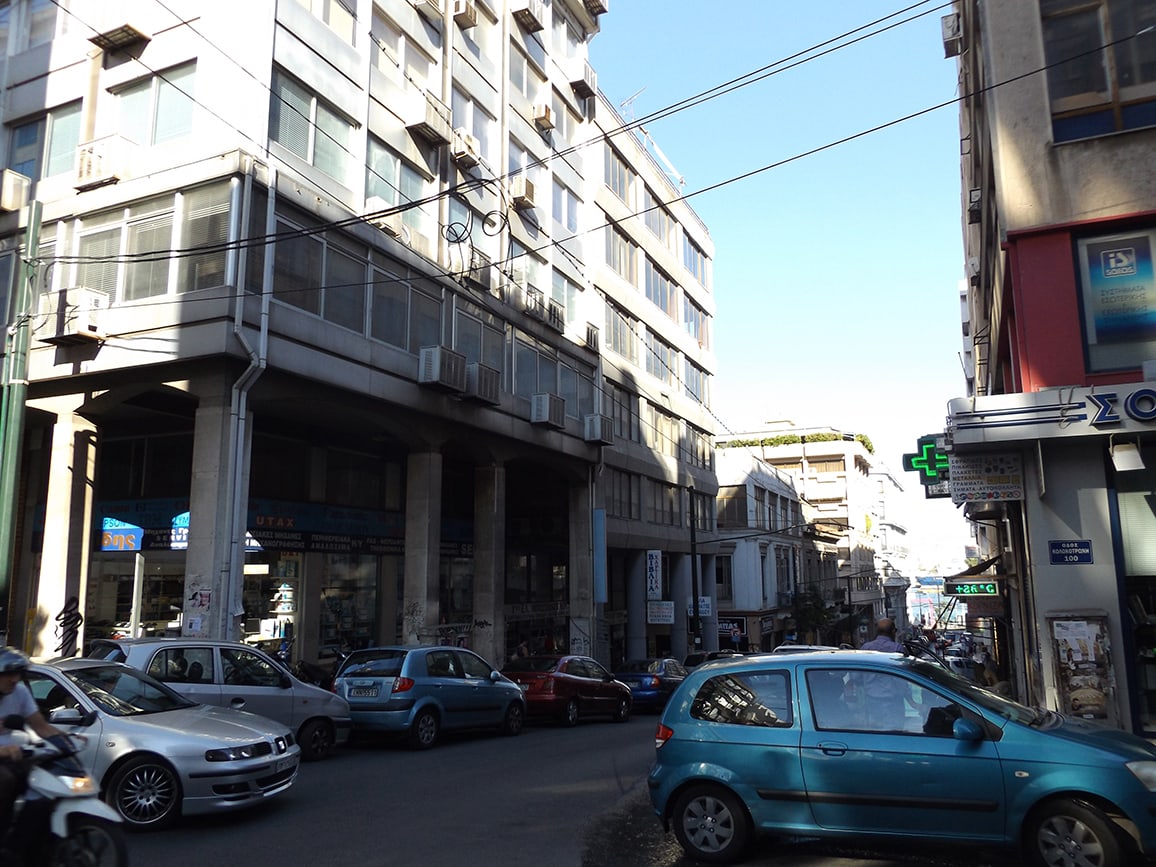
When in the XX century people were looking for something to emphasize the industrial vector of the development of the area, most often their choice fell on the brutal Soviet functionalism. The Greeks did not reinvent the wheel and also chose this path. If it were not for the Greek names around, it would be difficult to distinguish this city from some Belarusian regional center.

Although sometimes it seemed to me that it would be a little easier on my soul if I did not understand Greek words. Because places with names like Zoofilion are really scary.
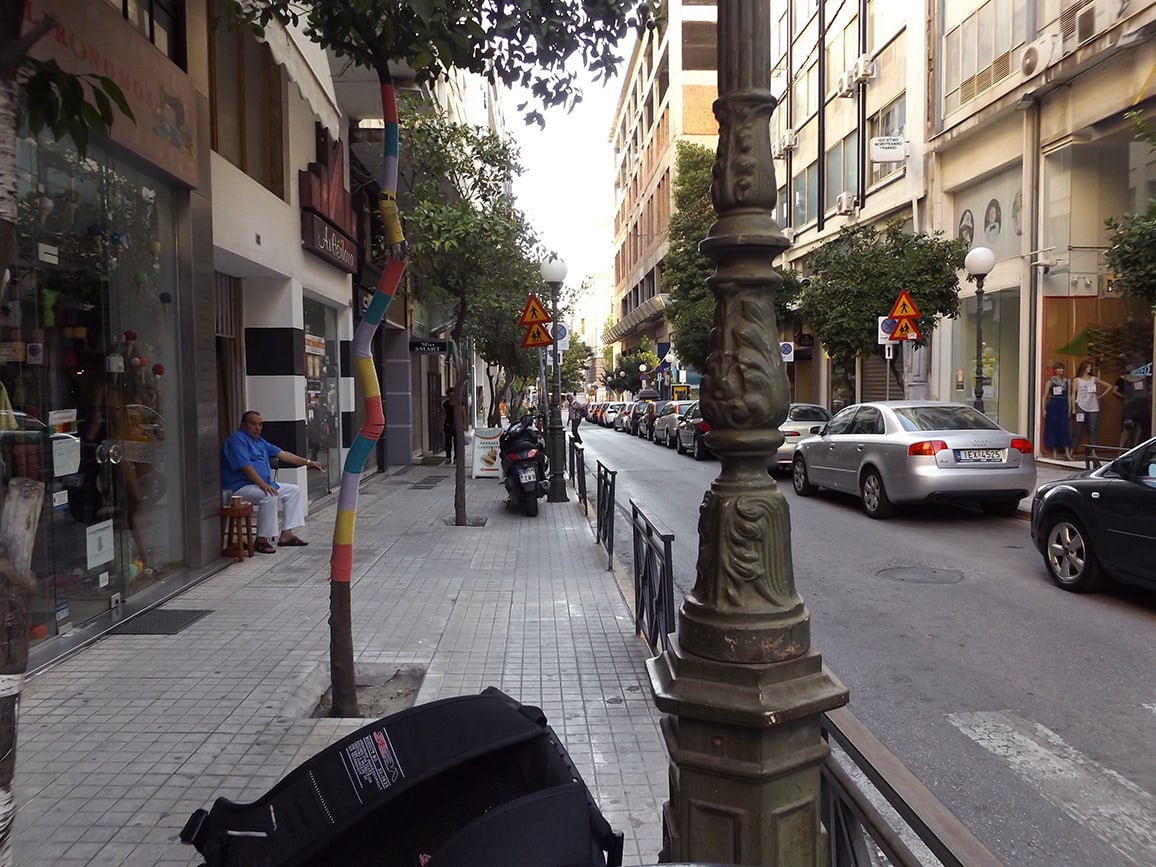
But in fact, Piraeus is not only a big port. It is worth walking a little deeper into the city and the surrounding reality begins to slowly transform.

The grayness of austere office buildings is diluted with greenery.
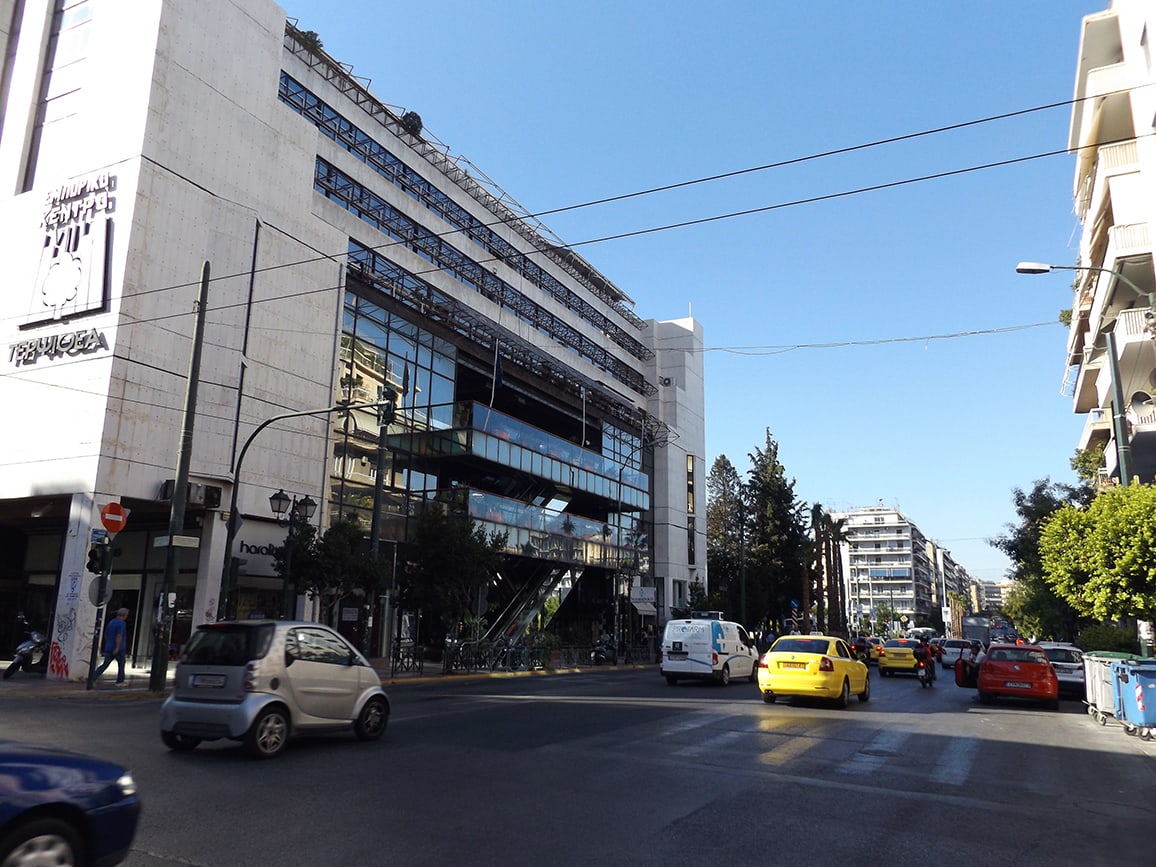
And they themselves are gradually becoming less gloomy and more modern.

A typical street in a residential area. Lots of greenery on the balconies, everywhere neat folding sun canopies.

There is also an old port in Piraeus. It is small, but dozens of private yachts and small boats are already parked in it, which have no place in the large port.

And somewhere from here, according to my impressions, a real city begins with living people, not staff.

Residential areas start from the coast and densely cover the entire surface of this hill.

And something like this looks like the aforementioned old port from its top.

Due to the relief, if not for the majority of residents, then certainly for a significant part of them, this view is available every day. And even if you live high enough, there are always dozens of short roads straight down. Well, or up … somehow I don’t want to think about the other side of the coin.
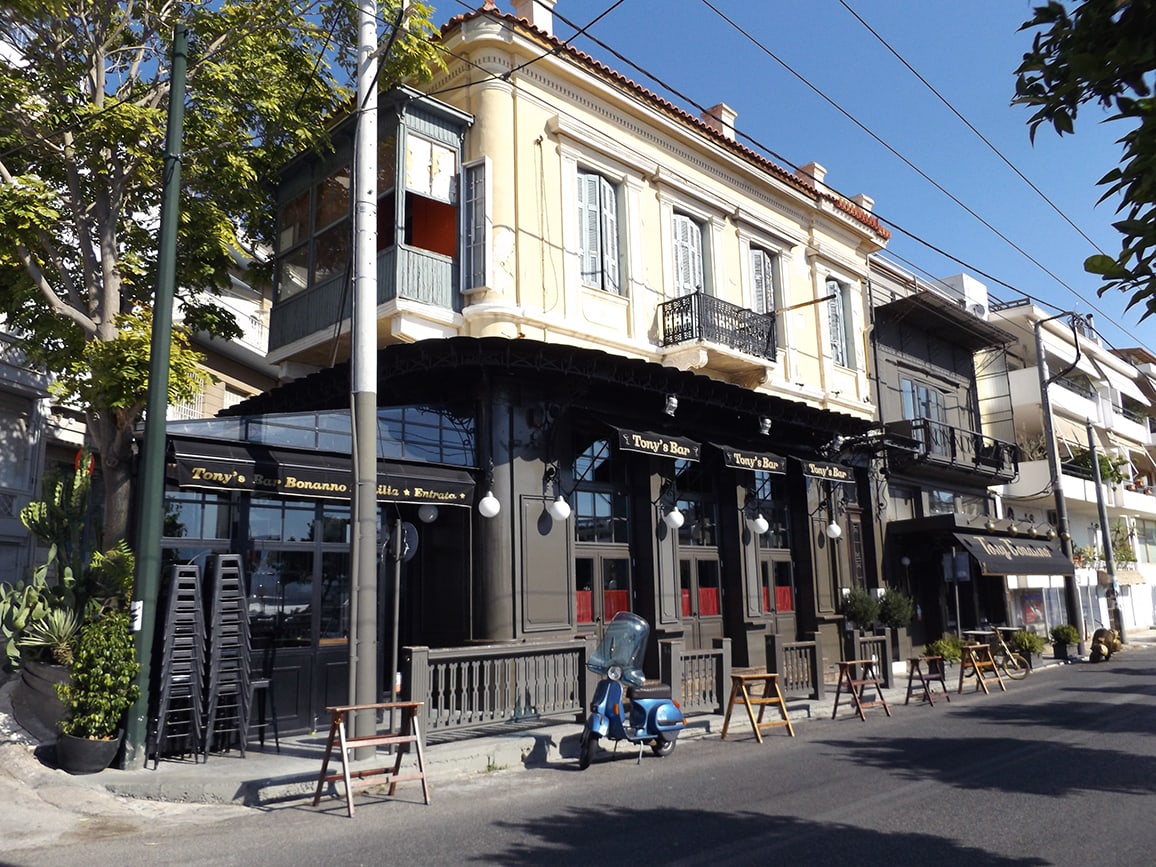
Various cafes and restaurants are common. After looking for a decent place to have breakfast in the port part of town in the morning, finding only endless sandwiches, this part of town seemed really cool.
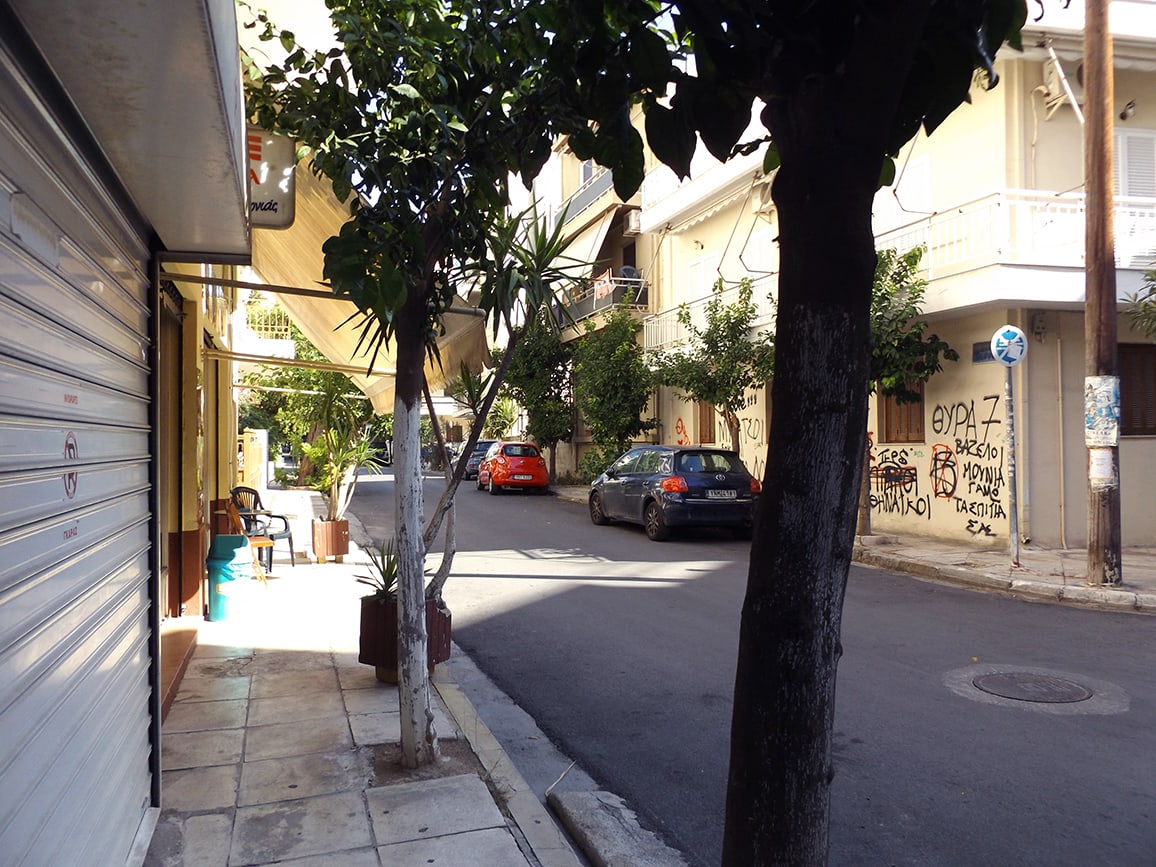
In general, we are breaking stereotypes: Piraeus is not only a port.

On the other side of the hill, the city seems to continue, but there it has already merged so tightly with Athens that today the borders are only on the map.

Moreover, the long tentacles of the Athenian subway reach here. I think, in particular, for this reason, the locals do not even feel as if they live in another city. By the way, there is an interesting moment in the metro: you can enter the car from both sides. True, you feel a little awkward, waiting for the train on the wrong side where most people are waiting for it, you want to take it and go to them. An irrational feeling is, I could hardly restrain myself, until the very arrival it seemed to me that I was doing something wrong.)
Athens

The central parts of the metro are literally among the centuries-old ruins. And to the locals it doesn’t seem like anything special. I don’t even know what to compare with … Well, for example, it’s as if the London-Bristol train would pass between the stones of Stonehenge on the way, and everyone is like: “What’s so special about it? Well, it is passing by, well, you think … “

But this, in principle, is the main charm of Greece: they did not become hostages of their own culture, fixated exclusively on their history and the preservation of its heritage. On the contrary, this is a modern country, and one wants to live here, and not just come to see the sights for a couple of days. Although this option, of course, has not been canceled.

A general chill-out at some low-key building, which on closer examination turned out to be the Parliament of Greece.

As elsewhere in Southern Europe, the most popular seating option in a cafe is outside tables. Sometimes it may seem that all the establishments are just packed, but quite often it turns out that the inside is full of places.

I climb the hill opposite the Acropolis. Firstly, because there should be a steep view of the city from here without crowds of tourists, and secondly, simply because it has a beautiful name – Hill of the Muses.

On the way I came across a small church from the 16th century. They had some kind of Orthodox party there, stuck flags.

At the top of the Hill of the Muses is the grave of a guy named Philopappos. Nothing special, he just likes to hang out here, so after his death his sister decided to bury him here. Yes, 2000 years ago it was that simple.

Moreover, the Acropolis was already here then. Perhaps only, perhaps, the residential areas below were slightly different in appearance.

Of course, not much is left of him, but even one temple of the Parthenon is enough to understand how epic he was. In general, an interesting situation comes out: quite intelligent people, after all, in all seriousness they built everything, and now for some reason it is obvious to everyone that all these Zeus, Poseidons and Pallas Athens are complete nonsense. At the same time, they still believe in Jesus or in Allah. Guess, yes, what the descendants will think about us, looking at our cathedrals and mosques?

And one more amazing thing in the end: this amphitheater is a concert venue that has been operating for more than 1800 years in a row. Seriously, you can’t go here to see it as a sight, but going to a concert or some festival is elementary. And, as you can imagine, to the Greeks this seems like a perfectly normal situation.

There were no normal prisons before, so the prisoners were kept in caves, blocking the entrance with a stone, which alone could not be moved even a centimeter. In this ancient jail, in particular, a well-known guy named Socrates spent his term. But why did they put the grates there – I still do not understand.

A small piece of the queue for tickets to the Acropolis. Well, I already examined it with a drone from all possible angles, so it would be simply stupid to dull an hour and a half under the sun and pay money for a ticket to physically go there and look at the same thing from an inconvenient angle.

Just a sandwich, where you choose what you want to put inside from the offered ingredients. It would seem that everything is simple, but there are only about 30 types of cheeses, not to mention everything else. I will miss, in general.)
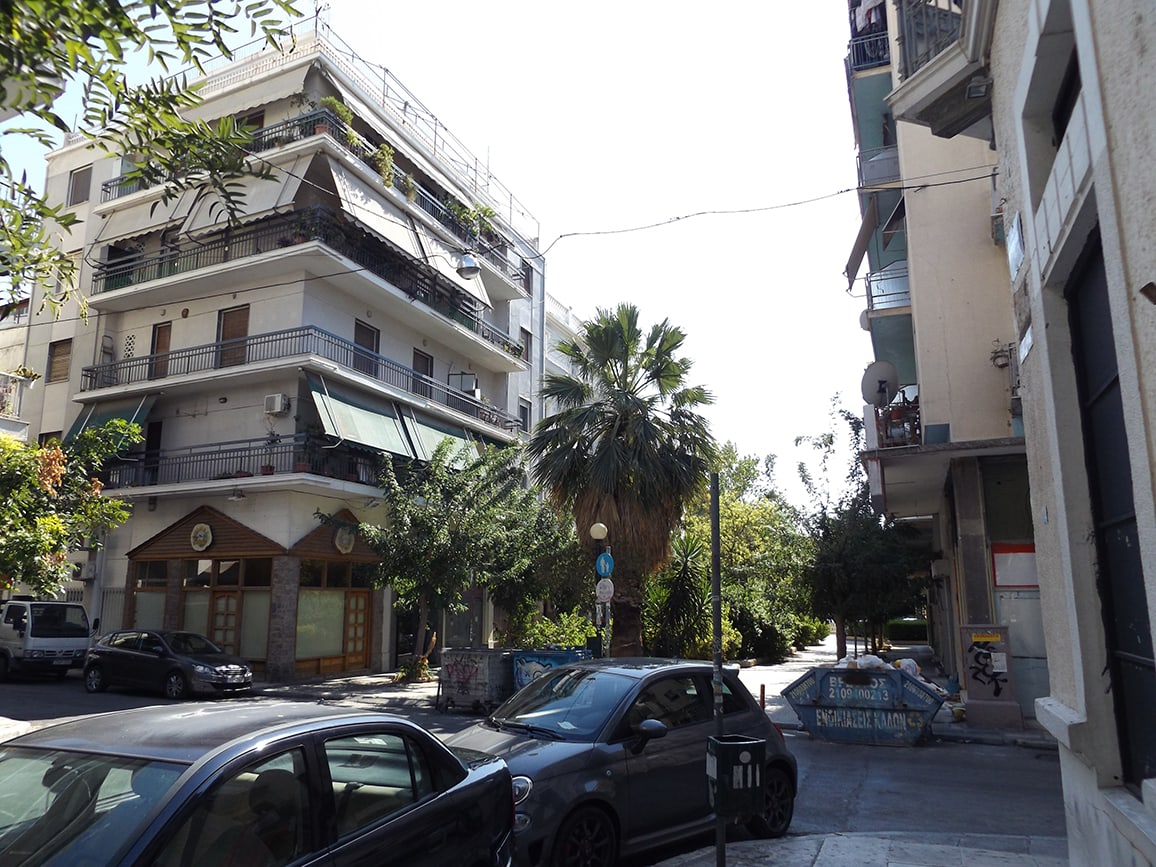
The least visited part of the center, located in the south of the Acropolis and consisting of a triangle of New Kosmos – Kukaki – Petralona districts, turned out to be the most comfortable. And yet close to all the most interesting places. Next time I plan to stay somewhere here.
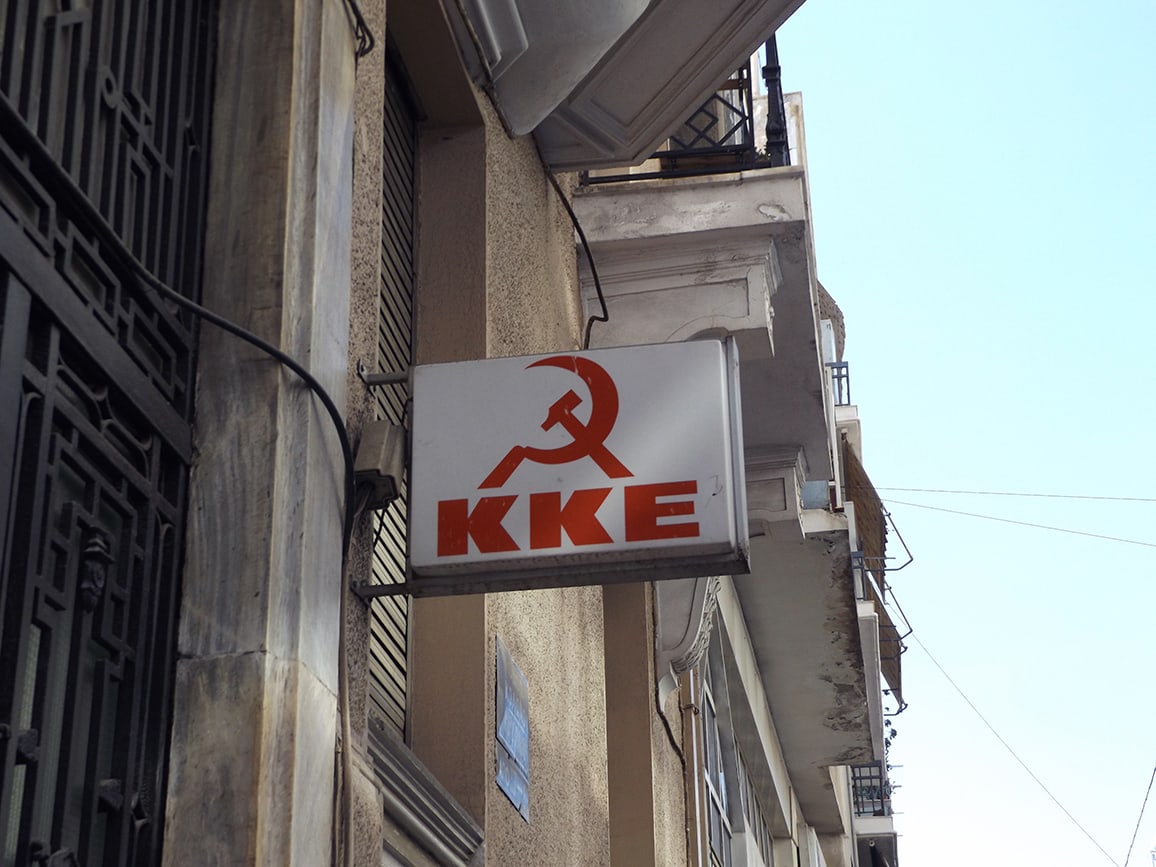
Office of the Communist Party of Greece. It’s just funny that they are still alive.
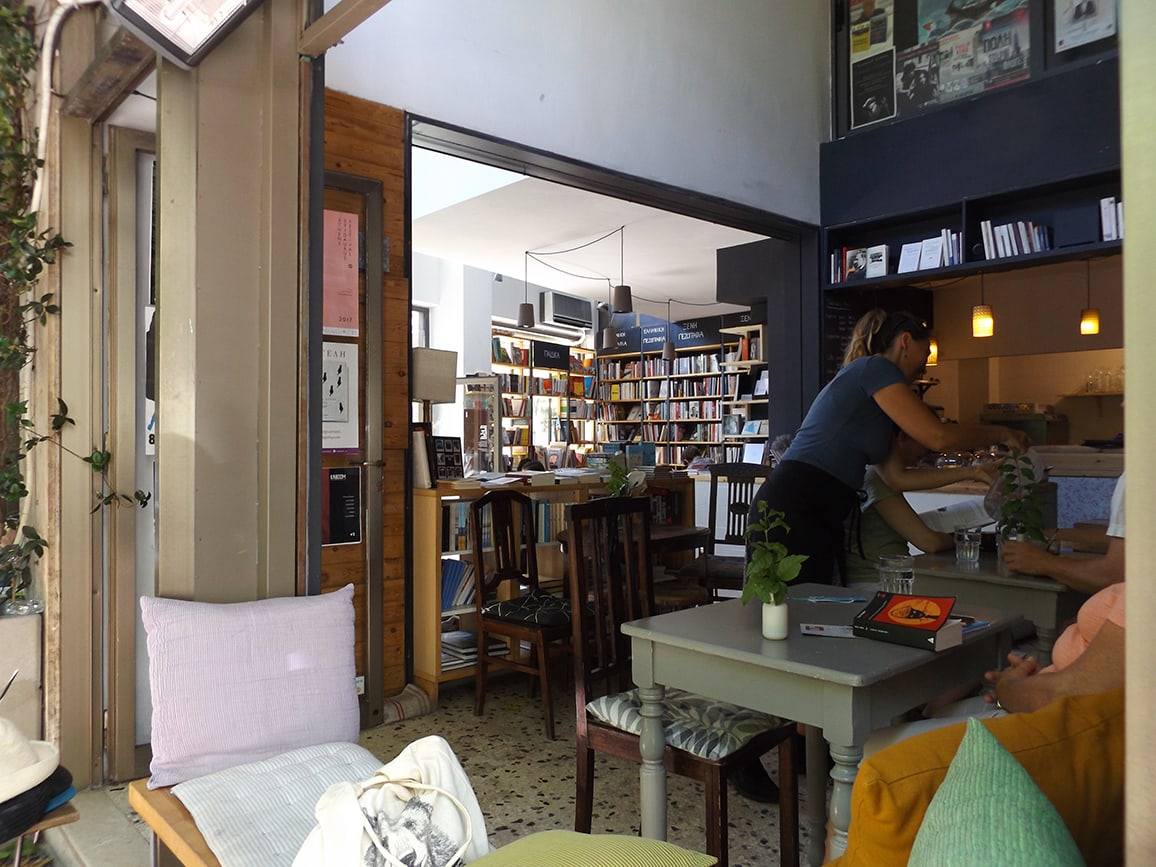
There are also many similar cool cafes in this area. It’s a pity they didn’t have anything in English in the library, otherwise I would have gotten stuck here.

Accidentally stumbled upon a shop of Asian sweets.

The Benaki Museum is impressive in size. Not bad for just the Greek part of the founder’s entire private collection, isn’t it?

As you already understood, it is difficult to impress the Greeks with antique pieces. Therefore, the exposition here begins with objects of “art” that are under 10,000 years old.
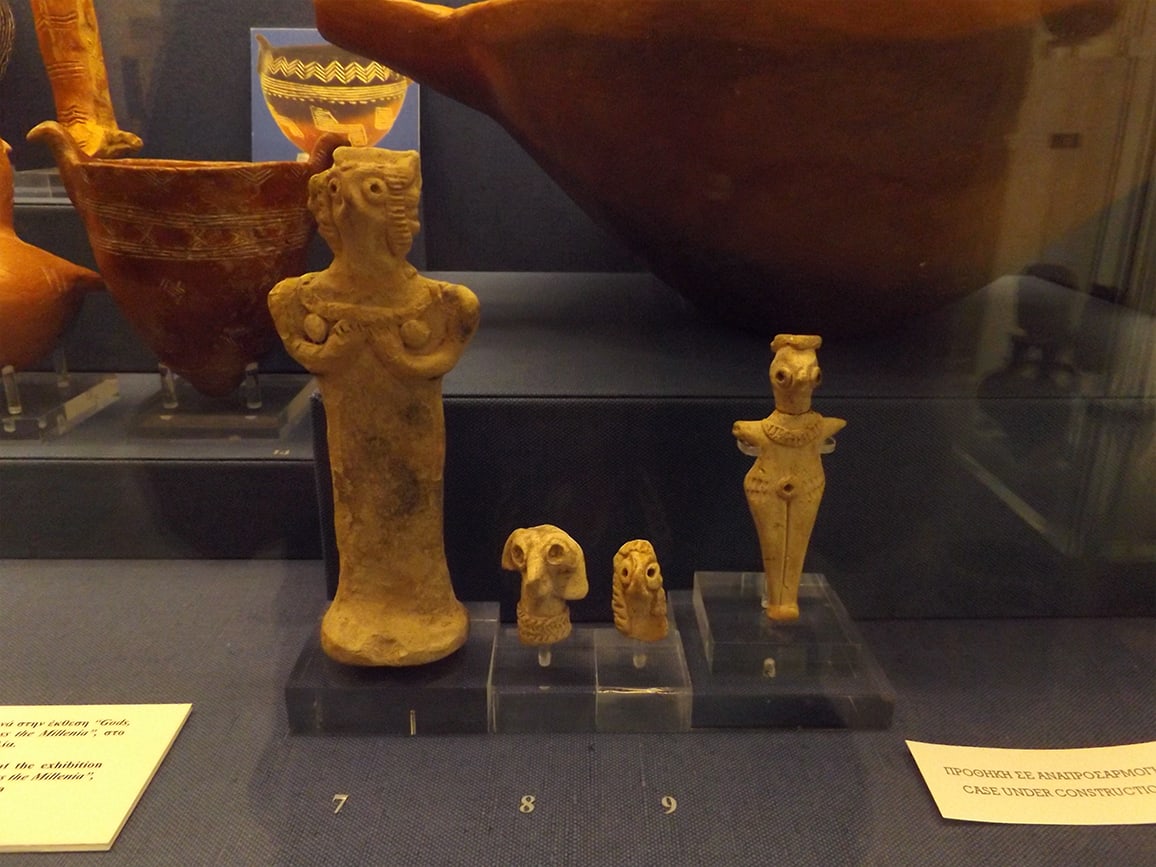
But in general it’s cool. I cannot imagine how else it is possible to create the same feeling of understanding between people who have lived with a difference of several thousand years, if not through common features in the sense of beauty.

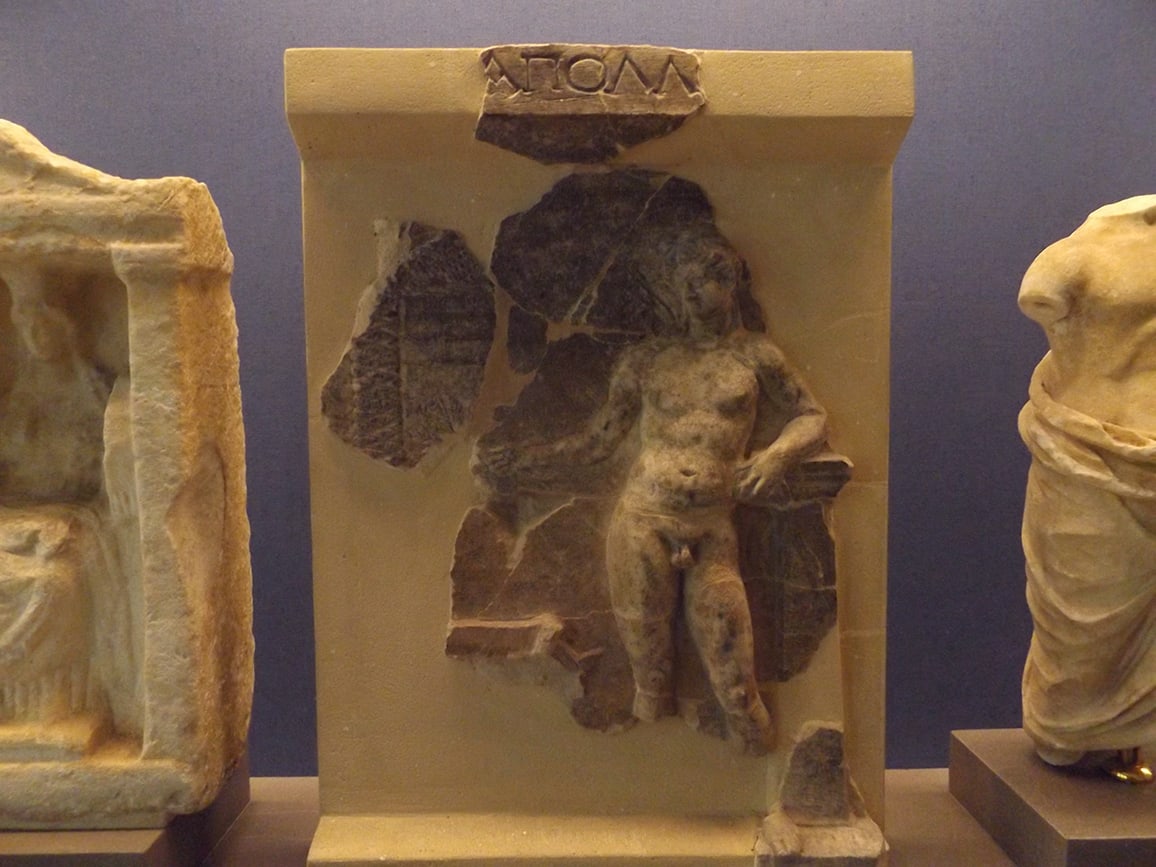
Antique statues and similar things stand generally without protective glass. You can come and touch.) It is not enough, they say, the ancients to protect them so.

There are indeed many Russian icons. This bodybuilder Jesus is my favorite.

The falling falcon from the coat of arms of Rurikovich (later gradually turned into the coat of arms of Ukraine) was for some reason attached to the tail of a cross. And all this was placed on top of the golden cap. Admittedly, a rather ridiculous wardrobe item came out.

Many paintings from the era of the Ottoman occupation.

Impressive even now.

“Enosis or death.” The essence of what is happening is that independence from the Ottoman Empire not all Greek regions received and the rest were engaged in this very enosis – desperate attempts to unite with the new Greece.

Does it look like anything?)

In general, a really good museum with a large coverage of eras.
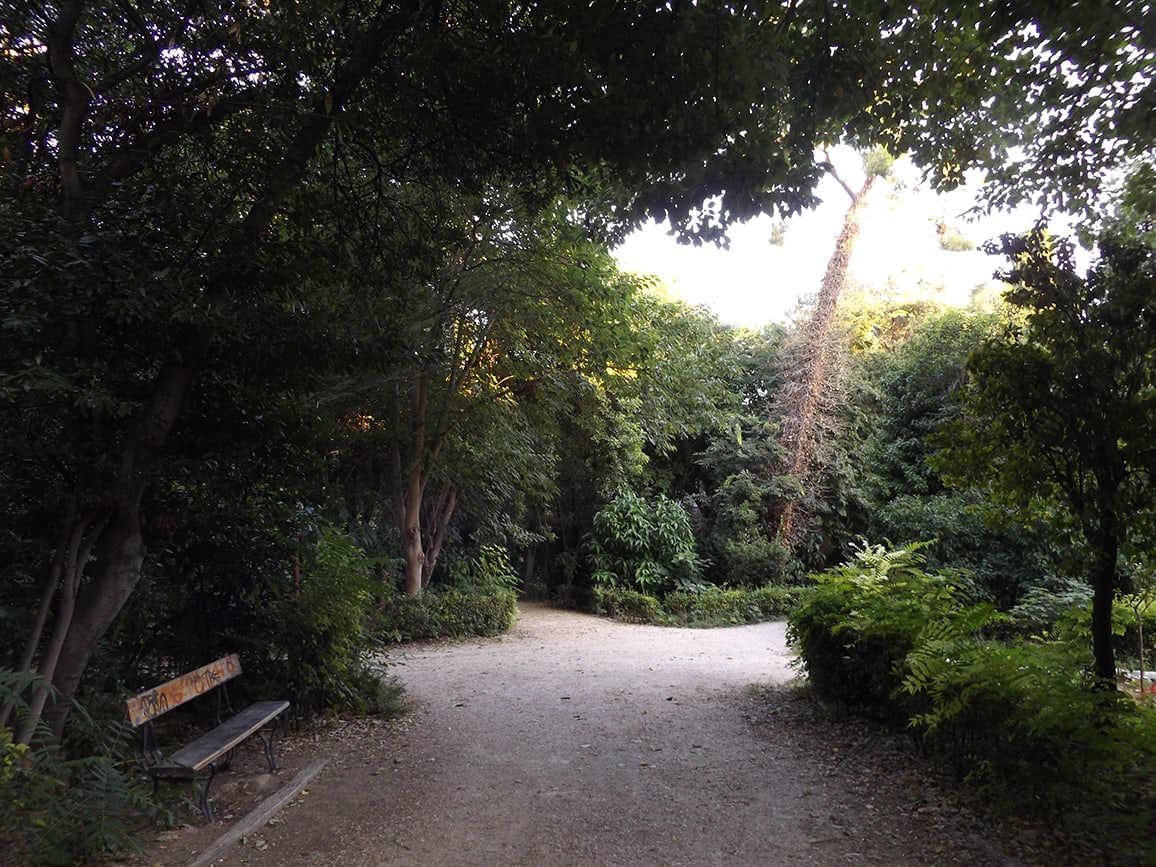
National Park may not be the most poetic name, but it’s really cool.

Sometimes walking along these semi-forest paths you can stumble upon small lakes.

Or even a small zoo.

Closer to the outskirts everything around becomes more and more humanized.

You can also travel here by car. O_o

Temple of Olympian Zeus. Rather, what is left of him.

I hope this guy at least glues copies, and does not rewrite every ad.

Finally I reached Plaka – one of the oldest and most beautiful areas of Athens.

It seems that this place was appreciated not only by me.

About 90% of shops sell souvenirs. A sad sight.
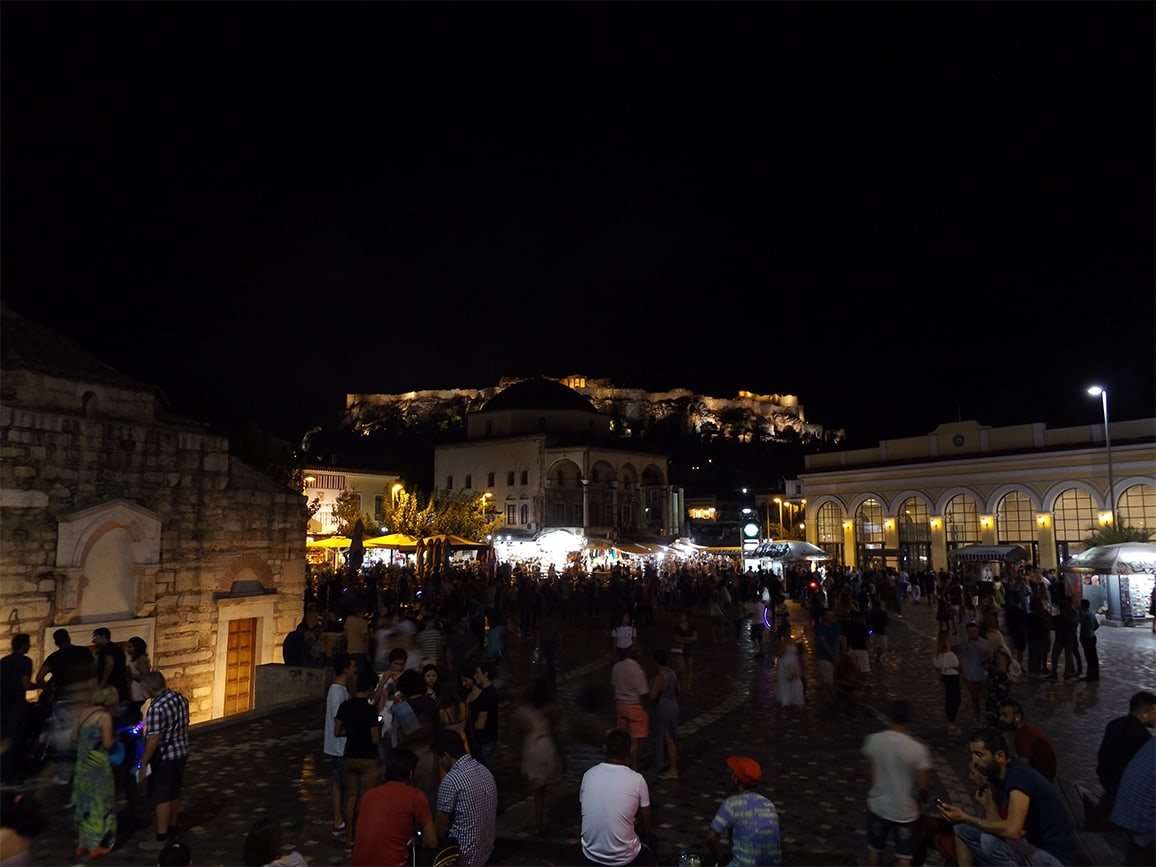
Another ancient area is Monastiraki. By the way, that mosque in front of the Acropolis is the very one, to get a stone for the construction of which the Ottomans demolished amazing ancient Greek temples. In particular, only a few columns remained from the temple of Zeus from the photo above, thanks to them.

Eating at night is twice as delicious. 🙂

And one more old area – Psiri. During the day there really is nothing here, but at night it just comes to life. It seems to me that there is a lot of things hidden in these houses in addition to the bars open to passers-by, and you need to know the places, and not just poke around blindly.

Even in the usually almost deserted suvlachnye at night there is a full house.

And here everything is painted with graffiti. And not only with tags, but also quite interesting. This is usually the right sign.
Thessaloniki

Mmm, panels in the rays of the dawn sun. A promising start.

In short, the first impression of the city was so-so.

But as soon as you walk to the embankment, everything changed.

Aristotle Square. I doubt that he was once in this city, in his time there was only a small village. Although, now Thessaloniki is the center of the modern Greek region of Macedonia, so okay. It is surprising, by the way, that the Republic of Macedonia did nothing of the kind: they like to reckon with themselves various Greek figures of that time.

In the center, instead of the Khrushchovka kopipastos, there are beautiful Greek high-rise buildings.

Among them are 2000-year-old ruins.

Nothing unusual.

The Rotunda is a long-suffering church, which was either plundered or destroyed, and under the Ottoman Empire it was generally turned into a mosque.

Now it is completely empty, people come to look at the preserved centuries-old frescoes.

Typical street in Thessaloniki.

Profiteroles with custard. They did not regret the cream, so thanks to the astronomical calorie content, this one dessert replaced my lunch.)

Alexander the Great. Compared to the gigantic statue in Skopje, it looks just tiny.

The White Tower, the symbol of the city. Earlier around it, at some distance around the perimeter, there were equally powerful-looking stone walls, but all this was not used for defense, as one might think, but as a full-scale Turkish version of the Lubyanka, with a prison and mass executions of dissidents.

And they probably bring the figures for the game by truck.

I went to the gallery of modern art. The Greeks are in trend, they make incomprehensible garbage.

It’s sad to realize, but this is roughly what for our descendants will take the place of antique amphorae.

I doubt that you have ever seriously thought about what a kilogram of fluff looks like, but if something like that happened suddenly, then it looks like this.

Stamps with portraits of the owner instead of unreadable radial texts.


But real contemporary art, of course, lives on the streets.

“It’s a fiasco, bro.”

When I decided to cut in a residential area.

Stumbled upon a Greek traditional wedding there. Noisy and crowded, like ours.

And with all the Orthodox attributes, of course.

At the top of the hill is Castra, one of the oldest districts in the city. Its borders are hard not to notice, because on all sides it is surrounded by large fortress walls.

Life outside the wall looks a little different than outside.

And in the center of the district there is a fortress Eptapirgio, which has been preserved since Byzantine times.

I go back to the sea.


It is clear that they were trying to show the dandelion umbrellas flying away in the wind, but due to the massive bases some intricate sculpture turned out.

And also there are very beautiful sunsets. The entire embankment suddenly turns into a long observation deck, where people gather to look at one of the simplest, but at the same time one of the most amazing wonders of nature.

Lo and behold.